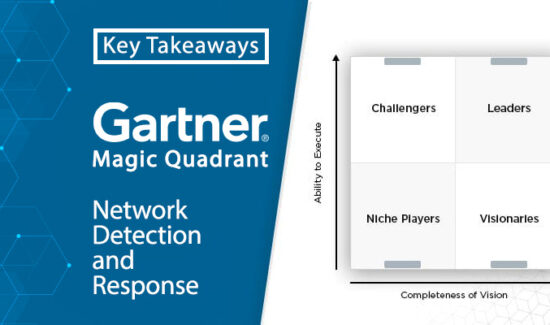10 NDR Best Practices to Consider in 2023


The editors at Solutions Review examine NDR best practices to consider when deploying the solution in 2023.
NDR, which stands for Network Detection and Response, is a comprehensive cybersecurity solution designed to monitor and analyze network traffic to detect and respond to potential threats. It provides organizations with enhanced visibility into their network infrastructure, enabling them to effectively identify and mitigate security incidents. NDR utilizes advanced techniques such as machine learning, behavioral analysis, and anomaly detection to detect malicious activities, including unauthorized access attempts, data exfiltration, malware infections, and other network-based attacks.
Traditional security measures like firewalls and antivirus software are no longer sufficient to combat sophisticated cyber threats. NDR complements these solutions by monitoring and analyzing network traffic, allowing organizations to detect threats that may have bypassed other security layers. When deploying a new solution, these are the NDR best practices to keep in mind.
In the market for network monitoring solutions? Check out our free Solutions Buyer’s Guide!
10 NDR Best Practices to Consider
When deploying NDR solutions, enterprises should consider following several best practices to maximize the effectiveness and efficiency of their implementation.
Here are some critical practices to consider:
- Define Clear Objectives: Clearly define the objectives and goals of deploying NDR within your organization. Determine what you want to achieve, such as threat detection, incident response enhancement, or compliance adherence, and align your deployment strategy accordingly.
- Assess Network Visibility: Conduct a thorough assessment of your network infrastructure to identify blind spots or areas lacking visibility. This evaluation should cover on-premises, cloud, and remote environments. Ensure the NDR solution monitors and analyzes traffic across the entire network to provide comprehensive coverage.
- Tailor Detection Rules: Customize your NDR solution’s detection rules and policies to align with your organization’s specific security requirements. This involves fine-tuning the solution to detect relevant indicators of compromise (IoCs) and suspicious activities based on your industry, network architecture, and threat landscape.
- Implement Baseline Monitoring: Establish a baseline for normal network behavior by monitoring and analyzing network traffic patterns over a specific period. This baseline will serve as a reference point to accurately identify anomalies and potential threats. Regularly update the baseline to adapt to changes in the network environment.
- Integrate with Existing Security Infrastructure: Integrate your NDR solution with existing security tools and infrastructure, such as SIEM (Security Information and Event Management) systems, firewalls, and endpoint protection platforms. This integration allows centralized visibility, streamlined incident response, and better correlation of security events.
- Continuous Monitoring: Ensure that your NDR solution operates in real-time, providing continuous monitoring and analysis of network traffic. Timely detection of threats and prompt incident response are critical to mitigating the potential impact of security incidents.
- Automation and Orchestration: Leverage automation and orchestration capabilities to improve the efficiency and effectiveness of your NDR deployment. Automate repetitive tasks, such as log analysis and alert triaging, to reduce manual effort and response time. Integration with incident response workflows enables a streamlined and coordinated response.
- Staff Training and Skill Development: Invest in training your security team to utilize the NDR solution effectively. This includes developing their skills in network traffic analysis, threat hunting, and incident response. Ensure they know the capabilities and features of the NDR solution to leverage its full potential.
- Regular Evaluation and Optimization: Continuously evaluate the performance and effectiveness of your NDR solution. Regularly review and optimize detection rules, fine-tune configurations, and analyze the solution’s output to reduce false positives and improve threat detection accuracy.
- Stay Up to Date: Keep your NDR solution and its underlying components updated with the latest patches and updates. Regularly review threat intelligence feeds and stay informed about emerging threats and attack techniques to enhance the solution’s capabilities.
By following these NDR best practices, enterprises can enhance their security posture, improve threat detection and response capabilities, and effectively leverage their NDR investment to protect their critical assets and sensitive data. NDR is an essential cybersecurity solution that provides advanced threat detection, incident response capabilities, regulatory compliance support, and comprehensive network visibility. Its adoption can significantly enhance an organization’s security posture and enable proactive defense against sophisticated cyber threats, ensuring the protection of critical assets and sensitive data.
This article on NDR best practices to consider was AI-generated by ChatGPT and edited by Solutions Review editors.





















